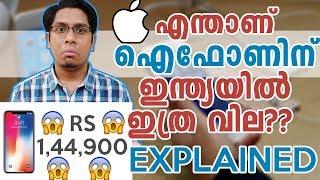#suknya_smridhi_yojna_in_hindi #sukanyaaccount #suknyayojana
Sukanya Samriddhi Yojana is a Savings scheme with the highest Tax benefits possible in India. SSY is targeted at the parents of a Girl Child. It encourages them to save and invest for the marriage and education of a Girl child. Sukanya Samriddhi yojana is also the highest Interest paying savings scheme in India.
In this video, Mr. Varun Malhotra will explain the following characteristics of Sukanya Samriddhi scheme :
1. Who can Invest ?
2. Duration of Investment & Lock-In period
3. Returns you can expect from Sukanya Samriddhi Yojana
4. How you can save upto 75 Lacs for your daughter (with calculations)
To learn How to open an SSY Account, please continue reading below
1. Visit an Authorised Bank Brach or a Post office
2. Fill out the SSY Account opening form (Available at Authorised Bank Branches & Post offices)
2. Keep the Documents (Read below) ready along with photographs
3. Pay the deposit amount (any amount between Rs. 250 and Rs. 1.5 lakh will do)
4. You can give a standing instruction at the branch or you can set up automatic credit to SSY
Account through NetBanking
Document Needed :
1. SSY Account opening form
2. Beneficiary’s birth certificate
3. Address proof of the guardian or parents of the beneficiary
4. Id proof of the guardian or parents of the beneficiary.
Authorised Banks list :
The Reserve Bank of India has authorized the following banks to open Sukanya Samriddhi Savings accounts (SSA).
1. Axis Bank
2. Andhra Bank
3. Allahabad Bank
4. State Bank of India (SBI)
5. Bank of Maharashtra (BOM)
6. Bank of India (BOI)
7. Bank of Baroda (BOB)
8. State Bank of Patiala (SBP)
9. State Bank of Mysore (SBM)
10. Vijaya Bank
11. State Bank of Hyderabad (SBH)
12. Indian Overseas Bank (IOB)
13. Indian Bank
14. IDBI Bank
15. ICICI Bank
16. United Bank of India
17. State Bank of Travancore (SBT)
18. Union Bank of India
19. UCO Bank
20. Punjab National Bank (PNB)
21. Syndicate Bank
22. State Bank of Bikaner & Jaipur (SBBJ)
23. Punjab & Sind Bank (PSB)
24. Oriental Bank of Commerce (OBC)
25. Dena Bank
26. Corporation Bank
27. Canara Bank
28. Central Bank of India (CBI)
**Why you should always invest on the 9th of Every month**
Interest is calculated on the Minimum Balance between the 10th & End of Every month, Therefore, ALWAYS INVEST ON 9th of every month.
Let's see with the help of an example :
Case 1 : If you deposit Rs. 2000 on 11th of Every month
April - Rs. 2000 (Deposited on 11th April 2019)
- No interest is calculated on Rs. 2000 for April
May - Rs. 2000 (Deposited on 11th May 2019)
- While you have deposited Rs. 4000, Interest is calculated only on Rs. 2000 deposited on 11th April 2019 NOT on the Rs. 2000 invested on May 11th 2019.
Interest earned is Rs. 14.16 for two months
Case 2: If you deposit Rs. 2000 on 9th of Every month
April - Rs. 2000 (Deposited on 9th April 2019)
Interest Earned for April - 8.5%/12*2000 = Rs. 14.16
May - Rs. 2000 (Deposited on 9th May 2019)
Interest Earned for May Rs. 14.16 (Approx. It will be slighter lower since the deposit of Rs. 2000 in May would not be invested for full 12 months but for 11 months)
Interest Earned is more simply because Interest is calculated on higher deposits when invested on 9th of every month as opposed to the 11th of every month, despite the fact that there was only a 2 day difference between the deposit (9th - 11th)
If this situation is repeated for 21 years, the extra interest earned + the impact of Compound Interest over 21 years = A very significant difference in your final corpus.
Website : https://www.varunmalhotra.co.in
Facebook Page: https://www.facebook.com/www.varunmal...
Instagram : https://www.instagram.com/varun.malho...
Stock market for beginners : https://goo.gl/LQEhPp
The Truth about the Mutual fund industry : https://goo.gl/Gouv4Y
Disclaimer: All videos/comments and all other forms of communication are for educational purposes only and should NOT be considered INVESTMENT ADVICE. The company (EIFS)/or any individual representing the company shall NOT be held liable for any loss suffered in any form by a student/youtube viewer/member of the public. Any information provided through our videos/classes/comments/social media posts or any other form must NOT be considered Investment advice.
Sukanya Samriddhi Yojana is a Savings scheme with the highest Tax benefits possible in India. SSY is targeted at the parents of a Girl Child. It encourages them to save and invest for the marriage and education of a Girl child. Sukanya Samriddhi yojana is also the highest Interest paying savings scheme in India.
In this video, Mr. Varun Malhotra will explain the following characteristics of Sukanya Samriddhi scheme :
1. Who can Invest ?
2. Duration of Investment & Lock-In period
3. Returns you can expect from Sukanya Samriddhi Yojana
4. How you can save upto 75 Lacs for your daughter (with calculations)
To learn How to open an SSY Account, please continue reading below
1. Visit an Authorised Bank Brach or a Post office
2. Fill out the SSY Account opening form (Available at Authorised Bank Branches & Post offices)
2. Keep the Documents (Read below) ready along with photographs
3. Pay the deposit amount (any amount between Rs. 250 and Rs. 1.5 lakh will do)
4. You can give a standing instruction at the branch or you can set up automatic credit to SSY
Account through NetBanking
Document Needed :
1. SSY Account opening form
2. Beneficiary’s birth certificate
3. Address proof of the guardian or parents of the beneficiary
4. Id proof of the guardian or parents of the beneficiary.
Authorised Banks list :
The Reserve Bank of India has authorized the following banks to open Sukanya Samriddhi Savings accounts (SSA).
1. Axis Bank
2. Andhra Bank
3. Allahabad Bank
4. State Bank of India (SBI)
5. Bank of Maharashtra (BOM)
6. Bank of India (BOI)
7. Bank of Baroda (BOB)
8. State Bank of Patiala (SBP)
9. State Bank of Mysore (SBM)
10. Vijaya Bank
11. State Bank of Hyderabad (SBH)
12. Indian Overseas Bank (IOB)
13. Indian Bank
14. IDBI Bank
15. ICICI Bank
16. United Bank of India
17. State Bank of Travancore (SBT)
18. Union Bank of India
19. UCO Bank
20. Punjab National Bank (PNB)
21. Syndicate Bank
22. State Bank of Bikaner & Jaipur (SBBJ)
23. Punjab & Sind Bank (PSB)
24. Oriental Bank of Commerce (OBC)
25. Dena Bank
26. Corporation Bank
27. Canara Bank
28. Central Bank of India (CBI)
**Why you should always invest on the 9th of Every month**
Interest is calculated on the Minimum Balance between the 10th & End of Every month, Therefore, ALWAYS INVEST ON 9th of every month.
Let's see with the help of an example :
Case 1 : If you deposit Rs. 2000 on 11th of Every month
April - Rs. 2000 (Deposited on 11th April 2019)
- No interest is calculated on Rs. 2000 for April
May - Rs. 2000 (Deposited on 11th May 2019)
- While you have deposited Rs. 4000, Interest is calculated only on Rs. 2000 deposited on 11th April 2019 NOT on the Rs. 2000 invested on May 11th 2019.
Interest earned is Rs. 14.16 for two months
Case 2: If you deposit Rs. 2000 on 9th of Every month
April - Rs. 2000 (Deposited on 9th April 2019)
Interest Earned for April - 8.5%/12*2000 = Rs. 14.16
May - Rs. 2000 (Deposited on 9th May 2019)
Interest Earned for May Rs. 14.16 (Approx. It will be slighter lower since the deposit of Rs. 2000 in May would not be invested for full 12 months but for 11 months)
Interest Earned is more simply because Interest is calculated on higher deposits when invested on 9th of every month as opposed to the 11th of every month, despite the fact that there was only a 2 day difference between the deposit (9th - 11th)
If this situation is repeated for 21 years, the extra interest earned + the impact of Compound Interest over 21 years = A very significant difference in your final corpus.
Website : https://www.varunmalhotra.co.in
Facebook Page: https://www.facebook.com/www.varunmal...
Instagram : https://www.instagram.com/varun.malho...
Stock market for beginners : https://goo.gl/LQEhPp
The Truth about the Mutual fund industry : https://goo.gl/Gouv4Y
Disclaimer: All videos/comments and all other forms of communication are for educational purposes only and should NOT be considered INVESTMENT ADVICE. The company (EIFS)/or any individual representing the company shall NOT be held liable for any loss suffered in any form by a student/youtube viewer/member of the public. Any information provided through our videos/classes/comments/social media posts or any other form must NOT be considered Investment advice.
- Category
- Financial Education










